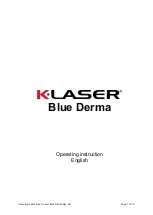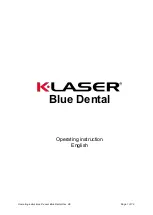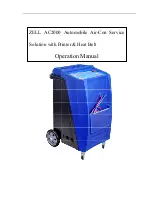
10.
CLEANING, STORAGE
& HANDLING
When cleaning the bed frame, it must not be immersed in water or washed with a high
pressure cleaner, as the water may find its way into the steel tubing and cause rusting. Clean
the powder coated surfaces with detergent and water.
The bed must be stored in a dry environment. The safest method of storage in a limited space
is to fold the bed as described above, castors locked and towers tied together.
•
Completely disconnect from the mains supply before cleaning
•
Wipe or swab to clean the bed frame, do not immerse in water or wash with a
high-pressure cleaner
•
This bed is not compatible with bed washing machines or tunnels
•
Ensure all surfaces are dry after cleaning and before storage
•
Clean the powder-coated structual surfaces and plastic components with a
neutral detergent solution
•
Store in a clean, dry environment between 0 and 45⁰C, away from direct sunlight
DISINFECTION GUIDANCE
The following compounds and processes are approved for disinfecting the bed frame and
bed components.
Sodium Dichloroisocyanurate (also known as NaDCC, troclodene sodium dehydrate, sodium
troclosene or sodic troclosene) used as a washing solution at concentrations between 1000
and 10000 ppm (eg SoChlor)©
Benzalkonium chloride 0.45%, Didecyl dimethyl ammonium chloride 0.40%,
polyhexamethylene biguanisde (PHMB) 0.10% (eg. Clinell Universal Wipes)©
Sodium Percarbonate, Citric Acid and Tetra acetyl ethylene diamine (eg. Clinell Sporicidal
Wipes)©
Sodium chlorite 35-50%, Sodium dodecyl sulphate 10-20%, Sodium carbonate 10-20%, Citric
acid 50-75%, Troclosene sodium dehydrate 15-30% (eg. Difficil-S)©
Hydrogen Peroxide vapour (eg. Bioquell)©
Ultraviolet - C radiation wavelength 100nm - 280nm (eg. Clinell UV360)© Note: excessive
exposure to UV radiation may result in crazing and discolouration of plastic materials






































